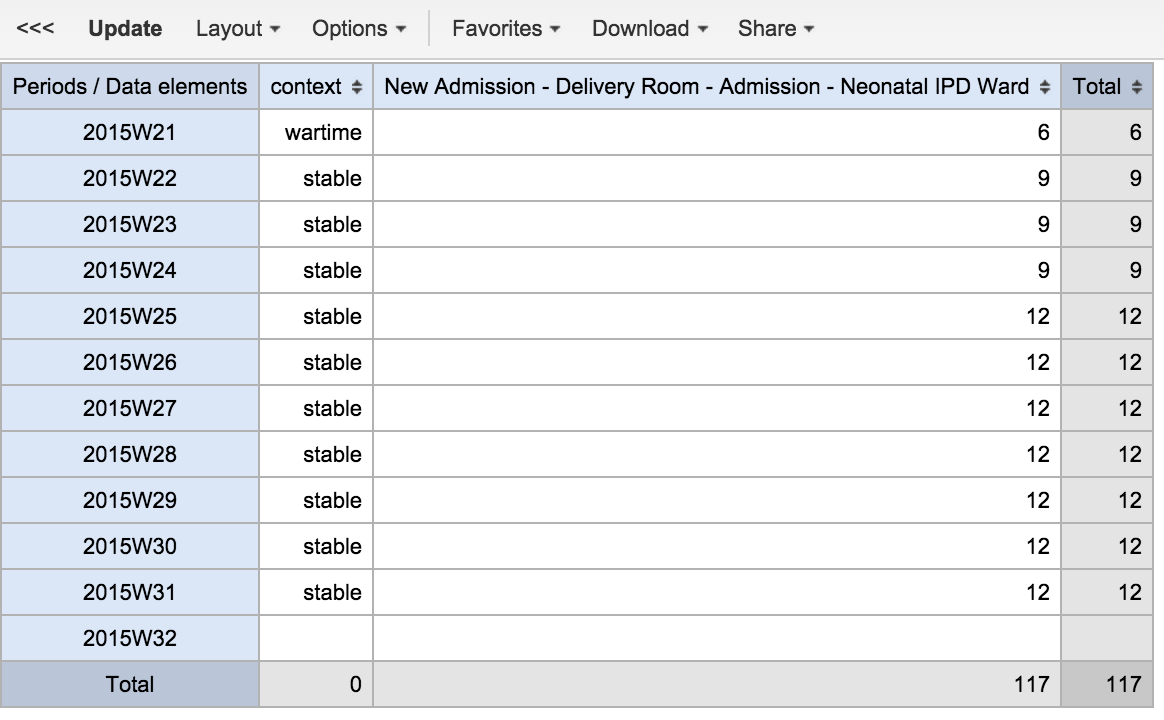dhis2-devs team mailing list archive
-
 dhis2-devs team
dhis2-devs team
-
Mailing list archive
-
Message #38880
Re: How to organise data in DHIS2 to capture project "context"
Hi lars ,
Did you get a chance to look at this issue ?
On Thu, Aug 6, 2015 at 12:20 PM, David Siang Fong Oh <doh@xxxxxxxxxxxxxxxx>
wrote:
> Hi Lars,
>
> We are currently working with MSF to attach project context to the data
> entries and would like some input on how best to structure this in DHIS2.
>
> *A bit of background to get started*
> Our org unit structure:
>
> - Company (i.e. MSF)
> - Operational Centre (i.e. OCP)
> - Country (i.e. Afghanistan)
> - Project (i.e. Kabul)
> - Operational Unit (i.e. Kabul Hospital)
> - Modules (i.e. Neonatal ward)
>
> At the project level we capture additional information to describe the
> "context":
>
> - Mode of operation (i.e. Direct, Remote etc.)
> - Reason for intervention (i.e. Armed conflict, epidemic etc.)
>
> We currently assign this information as attributes for the Project org
> units. To assist with data analysis we also organise the projects into org
> unit groups based on this information, for example an org unit group for
> "Direct Mode of Operation" and another group for "Remote Mode of Operation".
>
>
> *The problem*
> The problem we are trying to solve is what happens to the data when a
> project "context" changes. For example if Kabul changes mode of operation
> from 'Direct' to 'Remote' on Week 22, we need to keep track that Weeks 1-21
> have data where the mode of operation was 'Direct', whereas Week 22 onwards
> will be data where the mode of operation was 'Remote'.
>
>
> *Our proposed approach*
> We intend to store the project "context" information as data elements. For
> example using the example above, for Week 10 in Kabul the data entered in
> the Neonatal Ward will have the actual numbers (i.e. admissions) as well as
> data elements which represent context (i.e. data element 'Mode of
> Operation' will be set to the option 'Direct', and data element 'Reason for
> Intervention' will be set to the option 'Armed conflict').
>
> This approach works well as far as recording the data. When we use a pivot
> table the data is represented as expected (see below). The problem is that
> when we represent this as a chart in the visualiser we are not able to use
> the data element 'context' as a filter.
>
>
> Is there a way to use the value of a data element as a filter in the
> visualiser charts? Can you think of a better way to organise our data to
> capture this 'context' information?
>
> Thanks for your assistance.
>
> Cheers,
>
> David Oh
> doh@xxxxxxxxxxxxxxxx
> +91 9900246052
>
>
--
*Sandesh Doolipeta**Application Developer*
Emailsandeshd@xxxxxxxxxxxxxxxx
Telephone9686062727
[image: ThoughtWorks] <http://www.thoughtworks.com/>
